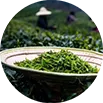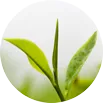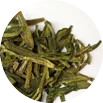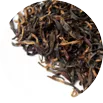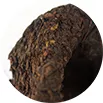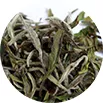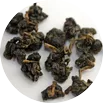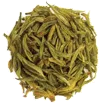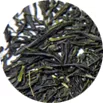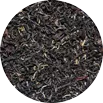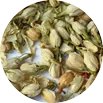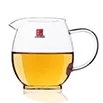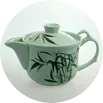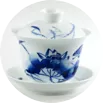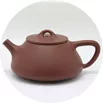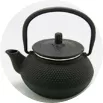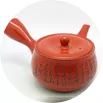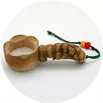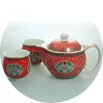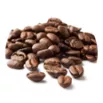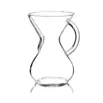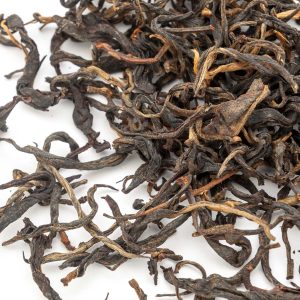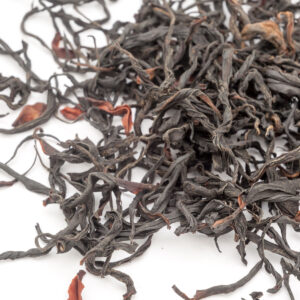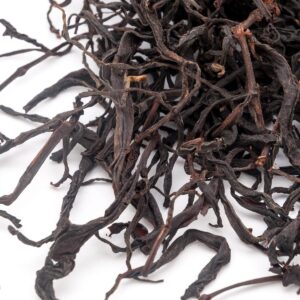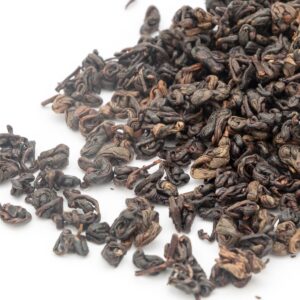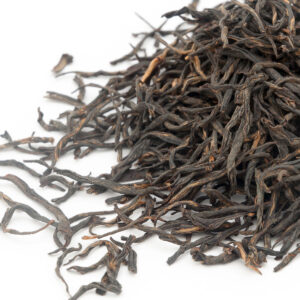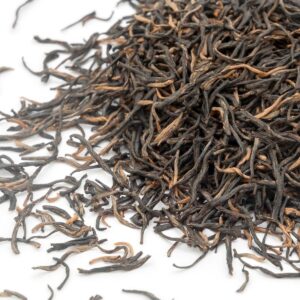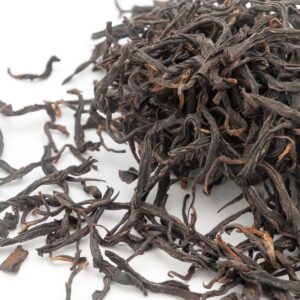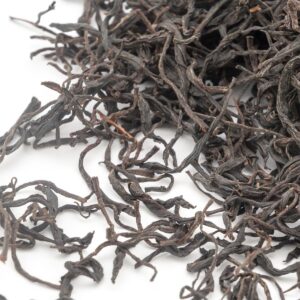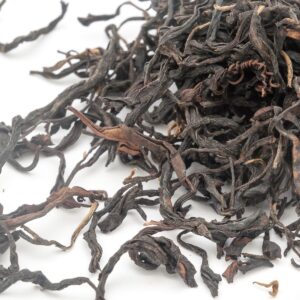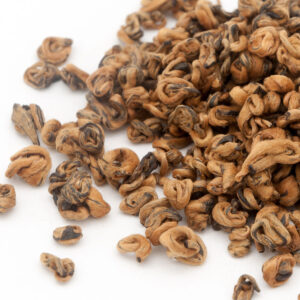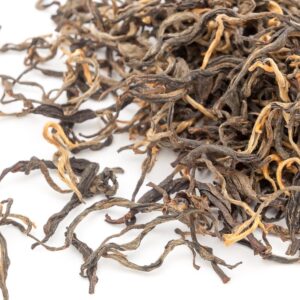Dian Hong Mao Feng
"Downy tip from Yunnan" - a high grade of red tea from the Meng Hai area.
The color of the infusion is orange-red. The aroma is sweet and intense with a typical aroma of dried apricots, malt and forest honey.
The taste is full, fruity-malty with a long-lasting sweet aftertaste. Pleasantly warming tea.
Dian Hong Ye Sheng
Zheng Shan Xiao Zhong
Hong Bao Shi
Jin Jun Mei
Tan Yang Jin Hao
Keemun Mao Feng
Meng Ding Hong Mei
Dian Hong Jin Hou
Yunnan Da Ye
Phoenix Hong Cha
Red tea – 红茶 [hóng chá]
Red tea, known as black tea in the West, is fully oxidized. It is valued for its instense aroma, full-bodied flavour, and refreshing and stimulating effect. It originates deep in Wu Yi Mountains 武夷山 in Fujian 福建 province. In contrast to regular black teas from other parts of the world, Chinese red teas are full-leaf, sweeter and more diverse in flavour, and multi-infusional.
The internationally famous Chinese red teas are: Yunnan Red 滇红, Keemun / Qimen Hong Cha 祁门红茶, Lapsang Souchong / Zheng Shan Xiao Zhong 正山小种 or Yi Xing Red 宜兴红茶.
Recommended preparation:
All red teas are multi-infusional and should be infused in boiling water (95-100°C). Use 3 grams of tea per 100ml of water, first rinse the tea, i.e. cover with hot water and drain immediately. Then we can proceed to the preparation of the first infusion, length of infusion 10-20 seconds, further infusions 0-10/10/12/15/20/25/30+ seconds.
Manufacturing process:
The specific processing of each species varies, however the following basic processes are usually used:
1) Fading
The collected leaves are spread outside or inside to fade and thus remove excessive moisture from the leaves and achieving the ideal ‘flexibility’ of the leaves for further processing.
2)Rolling
Traditional processing – rolling – damages the structure of the leaf and thereby releases the juice from the leaf and makes it available for oxidation, at the same time shapes the leaves (can be manual and/or machine)
3) Oxidation
Exposure of damaged leaves to air (hence the term oxidation) stimulates the natural enzymatic breakdown of their cellular structure. This chemical process creates new substances such as theaflavins and other substances that were not present in the original tea leaves. Specific processing procedures used to be carefully guarded and at the same time perfected over centuries. Each process gives the tea its unique aroma and taste.
4) Drying
It stops oxidation, stabilizes any moisture inside the leaves, prevents mold growth. Pan drying and other processes are used.
5) Sorting
At the end of the processing, the leaves are sorted according to quality and other characteristics into different sortes before packaging using sieves or by hand.
History:
Before the process of making red tea was discovered during late Ming and early Qing dynasties (mid 17th century), the vast majority of consumption was covered first by unfermented green teas and later by partially fermented teas. It is said that the passing army stayed near a tea factory in the Wu Yi area of Fujian province for several days and delayed the production of tea there. As soon as the soldiers left, the farmer noticed that the collected leaves had changed color to an unusual shade of red, and since he wanted to save at least some tea, he quickly began to dry it. However, during their stay, the army used up all the coal used to dry the green tea, so the farmer was forced to dry the tea over a fire made of local pine wood. This process caused a chemical reaction inside the leaves, giving the resulting tea an exceptional smoky-fruity (like a long an) flavor. This is how the tea best known as ‘Lapsang Souchong’ was discovered. Lapsang Souchong is an English phonetic transcription of ‘|正山小种 in Fujian Province dialect (or Fujianese), which can be translated as ‘Little variety from the true mountains. In Mandarin Chinese the spelling changes into Zheng Shan Xiao Zhong. This smokey tea became very popular in China and led to the development of a whole new type of tea, which was called red in China based on the color of the leaf after processing, and later became known in the world as black (fully oxidized – often incorrectly referred to as fermented).
Health:
Chinese red tea contains: selenium, vitamins A, B, C, E, polyphenols, potassium, carotenes, fluorides, caffeine and other substances
According to the traditional view, it has several effects:
1. refreshes the body and removes fatigue
2. is a diuretic
3. Anti-aging, antioxidant
4. relaxes blood vessels and strengthens the heart


